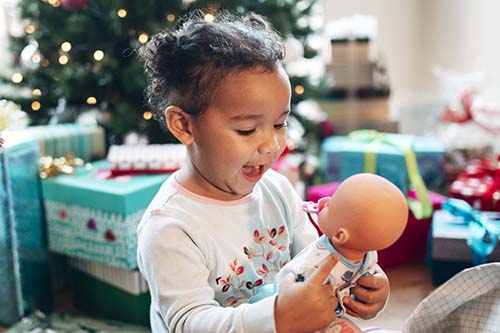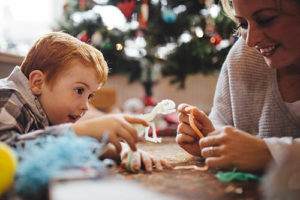Prevent Blindness America has declared December as Toy Safety and Gifts Awareness Month. According to the U.S. Consumer Product Safety Commission, emergency rooms worldwide treated more than 251,800 toy-related injuries. And, 72 percent of those injuries were to children under the age of 15. In fact, approximately 89,500 were to those under 5 years of age.
The most commonly injured part of the body is the head and face area, with the most common injuries being lacerations, contusions, or abrasions.
Tips for Giving Safe Toys to Children
The Prevent Blindness organization provides tips to gift-givers to make sure gifts are safe, especially those intended for children. Before purchasing a toy or gift, they suggest:
-
- Read all warnings and instructions on the box.
- Ask yourself or the parent if the toy is right for the child’s ability and age.
- Consider whether other smaller children may be in the home that may have
access to the toy. - Avoid purchasing toys with sharp or rigid points, spikes, rods, or dangerous
edges. - Check the lenses and frames of children’s sunglasses; many can break and
cause injuries. - Buy toys that will withstand impact and not break into dangerous shards.
- Look for the letters “ASTM.” This designation means the product meets the
national safety standards set by the American Society for Testing and Materials
(ASTM). - Avoid toys that shoot or include parts that fly off.
- Gifts of sports equipment should always be accompanied by protective gear
(such as a basketball along with eye goggles or a faceguard with a new batting
helmet for baseball or softball). - Don’t give toys with small parts to young children. Young kids tend to put things
in their mouths, increasing the risk of choking. - Do not purchase toys with long strings or cords, especially for infants and very
young children as these can become wrapped around a child’s neck. - Always dispose of uninflated or broken balloons immediately. According to the
CPSC, more children have suffocated from them than any other type of toy. - Ensure that laser product labels include a statement that the device complies
with 21 CFR (the Code of Federal Regulations) Subchapter J (per an American
Academy of Ophthalmology recommendation).
“The holidays can get hectic, but we need to be diligent when purchasing gifts, especially for children, making sure they are safe and fit each child’s needs,” said Debbie Goss, president and CEO of Prevent Blindness. “By taking a few precautions, we can spend time with our family and friends and not in the emergency room!”
More Information about Safer Toys and Gifts
- Safe Toy Checklist by Prevent Blindness Organization
- Toy Safety Tips from the American Academy of Pediatrics
- 2019 Product Recalls from Safe Kids Worldwide
 About Jim Gottlieb, MD
About Jim Gottlieb, MD
Pediatrician
As a board-certified pediatrician, Dr. Jim Gottlieb enjoys getting to know each child and their family. “I love offering continuity of care and a medical home to my patients,” he says. His philosophy of care is simple: “The child, first and always. I enjoy partnering with families with one goal in mind – to help children stay healthy and to heal them when they are not.”
Dr. Gottlieb welcomes new and current patients via telemedicine and in-person appointments. He practices in Boulder and Longmont, Colorado.
Additional Resources
- Call (303) 938-4750 to Make an Appointment
- Dr. Gottlieb’s Full Profile
- Meet the Well-Baby Team at Boulder Medical Center


